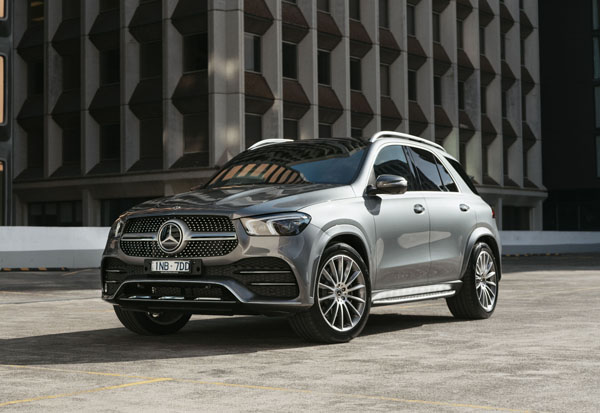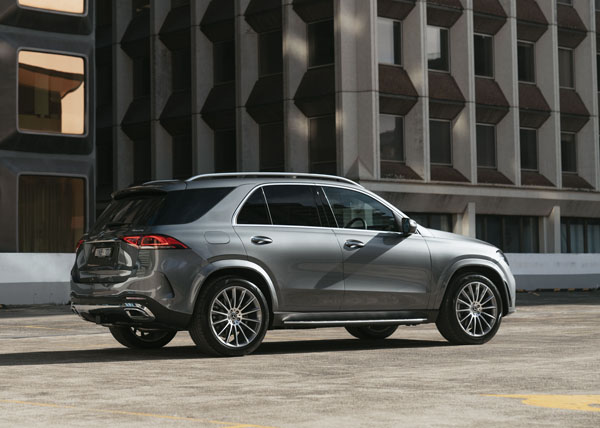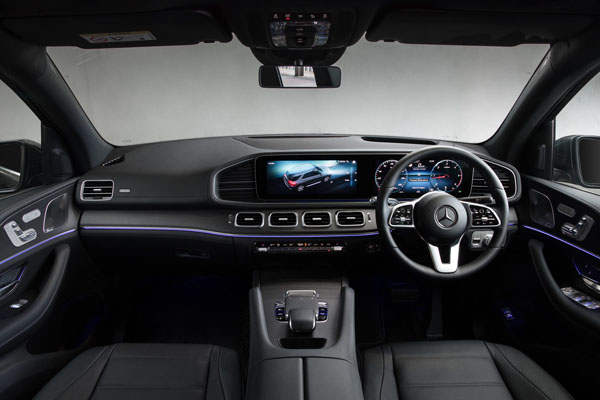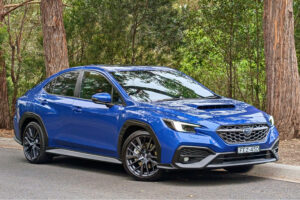 Mercedes-Benz is wheeling out the big guns to take on the opposition, such as Audi, BMW, Range Rover, Volvo, Jaguar and Porsche, plus the odd Johnny-come-lately like Bentley and Maserati, in the premium sports utility segment.
Mercedes-Benz is wheeling out the big guns to take on the opposition, such as Audi, BMW, Range Rover, Volvo, Jaguar and Porsche, plus the odd Johnny-come-lately like Bentley and Maserati, in the premium sports utility segment.
New from the ground up, the Mercedes-Benz in question, the GLE, comes to market in Australia with a fresh look and a range of new-generation engines, plus the innovative driver-vehicle connectivity of the Mercedes me Connect system.
The fourth generation large SUV, which originally started out as the M-Class, has got bigger than the vehicle it takes over from. There’s more room inside – 70 mm extra legroom in the rear – with a third row of seats available on all models.
A new series of engines, including a powerful inline six-cylinder
petrol motor pumped up by the EQ Boost 48-volt electrical system with
integrated starter / generator. 4Matic all-wheel drive is standard across the
range.
A 2.0-litre, four-cylinder turbocharged unit (180kW / 500Nm), mated with a 9G-Tronic nine-speed automatic transmission, is present in the GLE 300 d 4Matic, while a 3.0-litre, inline ‘six’ turbo-diesel motor powers the GLE 400 d 4Matic model producing 243 kW and 700 Nm, also via a 9G-Tronic auto transmission.
A new 3.0-litre, turbocharged six-cylinder petrol engine is paired with the EQ
Boost 48-volt onboard electrical system in the GLE 450 4Matic. Also paired with the 9G-Tronic auto, it puts out 270 kW and 500 Nm, with the integrated starter / generator of the EQ Boost able to capture deceleration energy and use up to 16 kW and 250 Nm of electrical assistance to create more linear acceleration.
On hand, also, is the Mercedes me Connect app, which allows the vehicle to be warmed up via the Remote Start system, doors can be locked or unlocked, the vehicle can be tracked or geofenced, an address can be sent to the vehicle navigation system, or nearby parking spaces found.
The owner will also be automatically notified of upcoming maintenance needs and can connect to a call centre at the press of a button in the event of an accident or breakdown.
The MBUX driver interface has been upgraded and is standard in the GLE. Focus of the system is side-by-side 12.3-inch digital screens, which present a mass of information in a clear and concise manner.
This includes the acclaimed ‘Hey Mercedes’ voice recognition and the Mercedes me Connect system. A windscreen-based head-up display is now standard across the range.
The interior also features Artico upholstery, multifunction sports steering wheel in
Nappa leather, heated front seats, open-pore oak wood trim, DAB+ digital radio,
and Apple CarPlay and Google Android Auto smart phone integration.
To top it all off there is a network of comfort systems in the vehicle, using musical and lighting modes, while a number of massage programs offer a wide range of feel-good features.
Although bigger than its predecessor, the new GLE has gained little weight, partly due to the use of plastic in its structure, while the lowest drag coefficient of any SUV in the market (Cd 0.29) is a significant improvement over the preceding model (Cd 0.32).
External features include Multibeam LED headlights with high beam assist, aluminium roof rails and aluminium-look illuminated running boards, powered kick operated tailgate, park assistant, puddle lamps with the Mercedes-Benz logo, and 20-inch, five-spoke alloy wheels. Australia is blessed with an 85-litre fuel tank.
Standard safety includes nine airbags, a 360-degree surround camera, parking assist, and driving assistance package incorporating distance assist, brake assist with cross-traffic function, steering assist, lane change assist, blind spot assist and crash preparation.
New for the latest generation GLE is the option of E-Active Body Control in which road surfaces are scanned by on-board cameras to identify imperfections ahead and pre-adjust suspension settings, while curve-tilting function can lean the vehicle into bends, improving road-holding and passenger comfort.
This feature also brings recent updates to Dynamic Select enabling a more streamlined choice of driving characteristics. A full underbody guard is also included for improved aerodynamics and fuel efficiency with the Airmatic package, which includes air suspension and adaptive damping.
A launch drive in and around Melbourne was limited to GLE 300 d models, some fitted with the optional air suspension. On a range of city and country roads of varying standards I found little difference in the ride of both vehicles, which I suppose, is a tribute to the fine tuning of both suspensions.
Handling favoured the air suspension, which appeared more planted than the steel version, swinging through fast bends and tight corners with little body roll. Steering was responsive and was in touch with all road surfaces encountered, feeding a steady stream of good news back to the driver.
Braking was assured and instantly available at the touch of the pedal. Interior space could not be found wanting, while visibility for the driver offered all-round views.
Potential buyers are expected to be young families, aged 35 to 45 attracted by the GLE design, safety features and the seven-seat option and extensive cargo space. Towing capacity tops out at 3500 kg with the addition of a tow package at $1900.
Prices range from $99,900 for the entry-level 300 d 4Matic diesel, through $111,341 for the 450 4Matic diesel to $118,142 for the 400 d 4Matic petrol. An AMG model will make an appearance next year.
AT A GLANCE
MODEL LINE-UP
Mercedes-Benz GLE 300 d 4Matic diesel $99,900
Mercedes-Benz GLE 450 4Matic petrol $111,341
Mercedes-Benz GLE 400 d 4Matic diesel $118,142
Note: These prices do not include dealer or government charges. Contact your local Mercedes-Benz dealer for drive-away prices.










